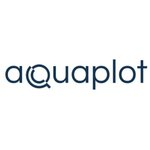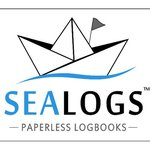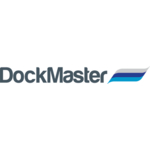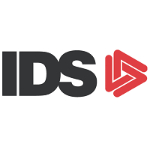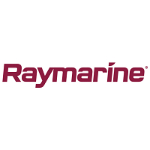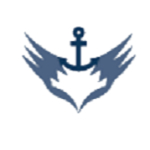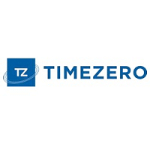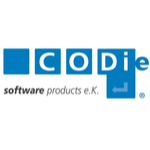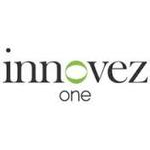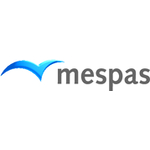TechnologyCounter provides genuine, unbiased real user reviews to help buyers make informed decisions. We may earn a referral fee when you purchase through our links, at no extra cost to you.
List of 15 Best Marine Software
Showing 1 - 15 of 23 productsAquaplot Explorer is a solution for all your marine navigation needs. With state-of-the-art technology and user-friendly design, this software allows you to seamlessly plan your sea routes, monitor weather conditions, and track vessel movements. Enha...Read Aquaplot Explorer Reviews
SeaLogs is a solution for organizing and managing all your maritime data. Designed specifically for the shipping industry, SeaLogs streamlines processes, increases efficiency and provides valuable insights for better decision making. Say goodbye to t...Read SeaLogs Reviews
Dockwa is a software thats changing the way boaters and marinas connect. With user-friendly features and a seamless booking process, Dockwa makes reserving a slip as easy as a few clicks. Say goodbye to confusing paperwork and delays, and hello to a...Read Dockwa Reviews
DockMaster is a docking software for all your needs. Designed to streamline and optimize your docking processes, DockMaster offers a seamless is a solution for managing dock reservations, tracking vessel movement, and creating a well-organized dock s...Read DockMaster Reviews
Astra Marine DMS the innovative document management system designed specifically for the marine industry. This user-friendly software streamlines document storage, retrieval, and organization while ensuring compliance and security. Experience seamles...Read Astra Marine DMS Reviews
Molo, the game-changing software designed to help you streamline your workflow and boost productivity like never before. With its innovative features and user-friendly interface, Molo is the perfect solution for businesses of all sizes. Say goodbye t...Read Molo Reviews
BiT Dealership Management, is a solution for all your dealership management needs. With our powerful software, you can efficiently manage all aspects of your dealership, from inventory and sales to finance and customer relations. Streamline your oper...Read BiT Dealership management Reviews
Named after the intricate and precise navigation capabilities of rays, Raymarine has been a leading provider of marine electronics for over 80 years. Inspired by innovation and driven by customer satisfaction, Raymarine offers a wide range of reliabl...Read Raymarine Reviews
Ayden Marine is a top-of-the-line software designed for marine professionals. Developed with precision and expertise, Ayden Marine offers a unrivaled platform for managing all aspects of marine operations. With its advanced features and user-friendly...Read Ayden Marine Reviews
TIMEZERO is a software revolutionizing navigation and positioning. Providing accurate is a time and location tracking, this powerful tool is perfect for sailors, fishermen, and anyone who needs precise navigation. With its user-friendly interface fea...Read TIMEZERO Reviews
CODie Maritime is a top-of-the-line software designed to revolutionize the way maritime operations are managed. With its innovative features and user-friendly interface, CODie Maritime ensures efficiency and accuracy in vessel management, crew schedu...Read CODie Maritime Reviews
MarineM is an innovative software solution designed specifically for marine industries. With user-friendly features technology, MarineM streamlines processes and boosts efficiency for all aspects of the marine business. Say goodbye to complicated sys...Read MarineM Reviews
MESPAS is the future of integrated maritime software. Designed to streamline and optimize vessel management, MESPAS is a tool that simplifies complex processes, enhances efficiency, and drives growth for maritime companies worldwide...Read MESPAS Reviews
Total Marina Package is a latest software designed to revolutionize the way marinas manage their operations. With a user-friendly interface features, this all-in-one solution streamlines tasks and increases efficiency. Say goodbye to outdated methods...Read Total Marina Package Reviews
My Marina Administration - your all-in-one solution for managing and optimizing your marina operations. Developed with the unique needs of marina owners and managers in mind, our software streamlines processes and provides invaluable insights to help...Read My Marina Administration Reviews
- What Is Marine Software?
- Top Reasons Why Businesses Need Marine Software?
- What Are the Top Key Features of Marine Software?
- What Are the Top Benefits of Marine Software?
- What Are the Steps to Choose the Right Marine Software?
- What Are the Types of Marine Software for Different Industries?
- What Are the Technology Trends for Best Marine Software?
- What Are the Deployment Options for Marine Software?
What Is Marine Software?
The term "marine software" pertains to a distinct category of computer applications utilized for the purpose of overseeing and controlling various operations conducted by maritime vessels and ships. The scope of responsibilities might encompass a variety of tasks, including overseeing technical operations and implementing complex data analytics and decision support systems.
Typically, marine maintenance software is developed with the purpose of assisting the personnel aboard a ship, including the captain and crew, in monitoring various aspects of the vessel's operations.
These aspects encompass the ship's location, engine functionality, cargo management, fuel usage, financial expenditures, communication systems, and other pertinent activities directly relevant to the project at hand.
Technological advancements, such as the utilization of Global Positioning System (GPS) and remote sensing, coupled with sophisticated data processing algorithms, provide the accurate determination of the positions and movements of those vessels.
Marine software finds widespread application across various domains including commercial transportation, ocean science, defense, and leisure pursuits such as yachting.
Top Reasons Why Businesses Need Marine Software?
1The enhancement of safety and quality standards in marine activities.
2. Enhancing the efficiency of data collecting and processing to facilitate more comprehensive and in-depth analysis.
3. One area of focus in improving navigation systems is the enhancement of both accuracy and efficiency.
4. One key objective of marine software is to enhance operational flexibility and responsiveness.
5. Enhancing operational efficiency through improved financial planning and scheduling.
6. The process of gathering and evaluating up-to-date facts to enhance the quality of decision-making.
7. The automation and streamlining of the storage and retrieval processes for maritime papers.
8. Enhancing customer service and enhancing consumer loyalty.
9. The task at hand involves the surveillance and administration of maritime resources, including ships, goods, and stock.
10. The monitoring of maritime environmental and weather conditions is a crucial aspect of maritime operations.
11. Enhancing security measures to improve marine security.
12. Improving operational efficiency through the utilization of analytics and machine learning techniques.
13. Enabling collaboration among diverse teams, such as those located onshore and at sea.
14. The objective of this study is to explore the potential benefits of integrating maritime systems as a means to enhance operational efficiency.
15. The objective is to enhance the level of transparency on the performance and operations of vessels.
What Are the Top Key Features of Marine Software?
The top key features of marine software include but are not limited to the following:
1. Chart display, plotting, and route planning: The marine program facilitates users in visualizing charts in both two-dimensional (2D) and three-dimensional (3D) perspectives, generating course plots, devising routes, and effectively handling navigation data.
2. Autopilot capabilities: The integration of marine management software with an autopilot system enables the effective management of a vessel's speed, course, and heading.
3. AIS (Automatic Identification System): Marine software has the capability to receive and decode Automatic Identification System (AIS) messages transmitted by vessels in close proximity.
4. Radar integration: Marine maintenance software has the capability to exhibit and manage the radar system of a vessel.
5. Weather and sea state monitoring: Marine software has the capability to accept and provide meteorological information, encompassing parameters such as wind velocity, wave amplitude, and atmospheric pressure.
6. Fishing analysis: The utilization of marine management software enables customers to effectively monitor fishing regions and enhance their catch optimization strategies.
7. Marine Synchronization Capabilities: The marine software possesses the capability to facilitate the synchronization of data across many devices and sources.
8. Alerts and alarms: The utilization of marine management software enables the monitoring and notification of users on alterations in the vessel's surroundings, encompassing deviations from a predetermined trajectory or variations in water depth.
9. Security: Marine software facilitates the establishment of a security system for the purpose of monitoring the vessel and detecting instances of unwanted access.
10. Instrument integration: Marine maintenance software has the capability to seamlessly incorporate real-time data obtained from several equipment, including but not limited to depth, speed, and heading, into a consolidated platform.
What Are the Top Benefits of Marine Software?
1. Improved Efficiency: Marine software enhances productivity in marine operations by employing more effective data gathering and reporting procedures, automated navigation systems, and customizable software solutions tailored to the specific requirements of the maritime industry.
2. Cost Savings: The utilization of marine maintenance software has the potential to yield substantial financial benefits compared to manual procedures, as it facilitates the automation of jobs, diminishes the necessity for extra staff, and streamlines operations.
3. Increased Safety: The utilization of marine software contributes to the enhancement of safety and security measures for both workers and cargo present on board vessels.
By enhancing navigational precision, implementing automated alarm systems, and enhancing the transparency of ships' operational state, the potential for accidents and other incidents can be mitigated.
4. Enhanced Documentation: The utilization of marine management software facilitates the efficient management of cargo, navigational logs, and other essential documentation required to ensure adherence to regulatory standards.
5. Enhanced Monitoring: Marine software facilitates enhanced monitoring of vessel tracking operations, encompassing real-time surveillance of engine status, fuel usage, and freshwater levels.
6. Enhanced Communication: Marine management software facilitates efficient communication between onshore and onboard workers, offering increased bidirectional communication to minimize delays and mitigate the risk of errors.
7. Automation: Marine software has the capability to automate specific operations, such as the planning of routes, the provision of notifications of approaching weather systems, and the generation of automatic self-reported maintenance logs.
This automation serves to minimize the need for manual labor and enhance overall operational efficiency.
What Are the Steps to Choose the Right Marine Software?
1. Analyze your needs: Conduct a thorough assessment of your specific maritime software requirements in order to ascertain the necessary features and capabilities.
2. Research marine software packages: Conduct a comparative analysis of different maritime software packages in order to identify the most suitable option based on individual requirements.
3. Seek user feedback: Engage in discussions with fellow users of the maritime software products under consideration, seeking their input and customer feedback.
4. Demonstrate the software: Conduct a comprehensive evaluation of the marine software to verify its functionality and ascertain its adherence to anticipated performance standards.
5. Check hardware requirements: It is imperative to ensure that the hardware currently in use is compatible with the selected software.
6. Assess your budget: Conduct a price comparison analysis to ascertain the marine management software that falls within your financial means.
7. Consider product support: It is imperative to ascertain that the seller provides adequate online and telephone assistance.
8. Read the license agreement: It is imperative to thoroughly review the licensing agreement in order to gain a comprehensive understanding of the stipulated terms and conditions.
What Are the Types of Marine Software for Different Industries?
Marine software can be categorized into four broad domains, namely commercial shipping, marine navigation, military operations, and leisure.
1. Commercial Shipping Software: The marine management software employed in the context of commercial shipping encompasses many applications that serve to streamline and enhance multiple aspects of ship operations.
These applications encompass functionalities such as facilitating the planning of maintenance and repair activities for ships, scheduling voyages, monitoring vessel performance and loading, managing cargo operations, and conducting analyses pertaining to marine-related expenditures.
2. Marine Navigation Software: Marine navigation software facilitates the navigation process for sailors, enabling them to traverse challenging maritime environments and successfully arrive at their intended destination while prioritizing safety.
The program encompasses applications for global positioning systems, voyage planning, and nautical charts.
3. Military Operations Software: The marine maintenance software utilized in military operations encompasses several functionalities such as satellite imagery processing, strategic planning, marine security management, intelligence collection, and navigation assistance.
4. Leisure Software: Software designed exclusively for leisure purposes encompasses several applications, such as those dedicated to fishing, marine weather prediction, wildlife monitoring, boat racing, and fishing competition administration.
What Are the Technology Trends for Best Marine Software?
In the realm of marine software, there are a number of noteworthy technical advances that merit attention. The popularity of cloud-based software is on the rise among marine operators because to their desire for the advantages provided by scalable, accessible, and secure cloud-based solutions.
Skedulo and similar companies have developed cloud-based marine maintenance software solutions tailored for the marine industry, utilizing machine learning and predictive analytics to enhance fleet safety, productivity, and regulatory adherence. Furthermore, the integration of artificial intelligence and machine learning-based analytics is being implemented within marine software.
The utilization of AI-powered predictive analytics is currently being employed to optimize data utilization and facilitate decision-making processes pertaining to maintenance, safety protocols, crew management, and other relevant areas.
Furthermore, the marine sector is increasingly recognizing the significance of digitization in documentation and data management. The advent of automated shipping and tracking systems has necessitated the prompt collection, digitization, storage, and retrieval of vital documentation by marine operators.
This includes shipping manifests, bills of lading, and customs forms. Companies such as Nautilus Labs are utilizing digital technologies to optimize their operations and enhance productivity.
In essence, marine software needs tailored development to cater to the unique requirements of the sector, while also prioritizing user-friendliness and robust security measures.
In order to maintain a competitive advantage, it is imperative for companies to persistently allocate resources toward acquiring optimal software solutions that align with their specific requirements.
What Are the Deployment Options for Marine Software?
Deployment options for marine software include the following:
1. Desktop: The conventional method of marine management software installation is represented by this approach. The installation process of the software involves downloading it onto a device and subsequently executing its setup method.
Upon the completion of the installation process, users can utilize the software by accessing it either through the desktop or the menu of the device.
2. Web-Based (Cloud): This methodology entails deploying the software on a server and enabling access to it via web browsers. This feature enables users to utilize the software without necessitating any installation on their own devices.
The software possesses the capability of being updated remotely and generally exhibits a higher level of security in comparison to desktop applications.
3. Mobile Apps: The availability of marine maintenance software for mobile devices is experiencing a notable increase. This feature enhances the software's accessibility, enabling users to conveniently use it from any location.
4. Embedded Hardware: This alternative entails the installation of software onto the hardware as opposed to its execution from a separate device. Remote control is frequently employed for the purpose of managing hardware, including navigation and tracking devices.
